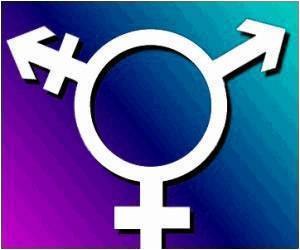FAQs on Exploring the LGBTQ+ Community: Diversity, Health, and Pride
1. What does LGBTQ+ stand for?LGBTQ+ stands for Lesbian, Gay, Bisexual, Transgender, Queer, and the "+" symbolizes inclusion of other diverse sexual orientations, gender identities, and expressions.
2. Why is LGBT inclusion important?
LGBT inclusion is important for fostering a diverse, equitable, and inclusive society where all individuals can live authentically, free from discrimination and stigma, thus enhancing overall well-being and social cohesion.
3. What surgeries might trans women pursue?
Trans women may pursue feminizing surgeries such as vaginoplasty, breast augmentation, facial feminization surgery, and voice feminization surgery.
4. What surgeries might trans men pursue?
Trans men may undergo masculinizing surgeries such as chest reconstruction, hysterectomy, and phalloplasty or metoidioplasty.
5. What does intersex mean?
Intersex refers to individuals born with physical sex traits that do not fit typical binary notions of male or female bodies.
6. Can intersex individuals be transgender?
Yes, intersex individuals can be transgender if their gender identity does not match the sex they were assigned at birth.
7. What is Klinefelter syndrome?
Klinefelter syndrome is a condition where males have an extra X chromosome (XXY), affecting their physical and sexual development.
8. What is Turner syndrome?
Turner syndrome is a condition affecting females, characterized by the partial or complete absence of one X chromosome, leading to various physical and medical issues.
9. What is a non-binary individual?
A non-binary individual does not exclusively identify as male or female, embracing a gender identity that can be a mix of both, neither, or another gender entirely.
10. How can you support LGBTQ individuals at work?
Support LGBTQ individuals at work by promoting inclusive policies, providing diversity training, establishing LGBTQ employee resource groups, and fostering a culture of respect and acceptance.
11. What challenges do LGBTQ students face?
LGBTQ students often face challenges such as bullying, discrimination, lack of support, and mental health issues, which can impact their academic performance and overall well-being.
12. How can you teach children about LGBTQ topics?
Teach children about LGBTQ topics through age-appropriate conversations, inclusive books and media, and fostering an environment of respect and acceptance for all people.
13. What is the difference between sexual orientation and gender identity?
Sexual orientation refers to whom a person is attracted to romantically or sexually, while gender identity refers to a person's internal sense of their own gender, which may or may not correspond with the sex assigned at birth.
14. What is gender dysphoria?
Gender dysphoria is the psychological distress that results from an incongruence between an individual's gender identity and their assigned sex at birth, often requiring medical and psychological support for resolution.
15. What are some common misconceptions about transgender people?
Common misconceptions include thinking that being transgender is a phase, that all transgender people have surgeries, or that their gender identity is linked to sexual orientation.
16. What is a pronoun and why is it important?
Pronouns are words used to refer to people in place of their names (e.g., he, she, they). Using correct pronouns is important as it shows respect for a person's gender identity.
17. What is the significance of Pride Month?
Pride Month, celebrated in June, honors the LGBTQ community's history, culture, and achievements, commemorating the Stonewall Riots and promoting equality and acceptance.
18. What is intersectionality and why is it important in the LGBTQ context?
Intersectionality is the concept that people can face multiple, overlapping forms of discrimination. Understanding it is important to address the unique challenges faced by LGBTQ individuals who also belong to other marginalized groups.
19. What is a GSA and how does it help students?
A GSA (Gender and Sexuality Alliance) is a student-led organization that provides a safe space for LGBTQ students and allies to support each other and advocate for inclusive policies in schools.
20. What are some mental health challenges commonly faced by LGBTQ individuals?
LGBTQ individuals may experience higher rates of depression, anxiety, substance abuse, and suicidal ideation due to societal stigma, discrimination, and lack of acceptance.
21. How can parents support their LGBTQ children?
Parents can support their LGBTQ children by showing unconditional love, educating themselves about LGBTQ issues, advocating for their child's rights, and connecting with supportive communities and resources.









